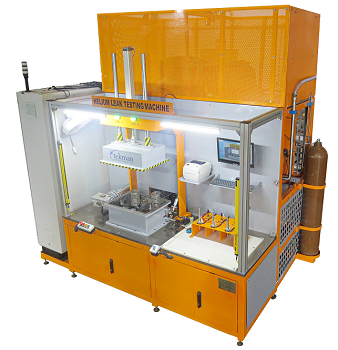Introduction
In recent years, the global demand for helium has experienced an unprecedented surge, driven by its extensive use in various industrial applications, scientific research, and even consumer products. Helium, a crucial element for numerous sectors, has become increasingly scarce due to its limited natural abundance and the challenges associated with its extraction. Consequently, the need for efficient helium recovery systems has gained prominence, not only to meet the growing demand but also to ensure sustainability and minimize the detrimental environmental impact of helium extraction. This comprehensive guide delves into the intricate details of helium recovery systems, highlighting their significance, working mechanisms, benefits, and their role in shaping a sustainable future for the helium industry.
Understanding the Helium Conundrum
Helium, the second most abundant element in the universe, remains relatively rare on Earth. This scarcity is primarily attributed to its unique properties, enabling it to escape the Earth’s atmosphere, resulting in limited reserves trapped deep within the Earth’s crust. Consequently, helium extraction predominantly occurs as a byproduct of natural gas processing, making its availability highly dependent on natural gas reservoirs. With the ever-increasing demand for helium across diverse sectors, the industry faces the imminent challenge of sustainable extraction and conservation.
The Emergence of Helium Recovery Systems
The advent of helium recovery systems marks a significant milestone in addressing the concerns of helium scarcity and wastage. These systems are designed to capture, purify, and recycle helium, thereby minimizing losses and maximizing its utility. Unlike conventional extraction methods that often result in helium wastage, recovery systems offer a sustainable approach by harnessing the potential of advanced technologies and innovative techniques.
Key Components and Working Mechanisms
Helium recovery systems comprise several essential components, each playing a crucial role in the efficient capture and purification of helium. The primary components include compressors, filters, adsorbents, heat exchangers, and storage tanks. These components work in tandem, utilizing processes such as cryogenic distillation, pressure swing adsorption (PSA), and membrane separation to isolate helium from other gases and impurities. The intricate working mechanisms of these components ensure the effective recovery of helium, thereby contributing to the conservation of this valuable resource.
Advantages of Helium Recovery Systems
The implementation of helium recovery systems offers numerous advantages, making them an indispensable asset for the helium industry and its stakeholders. Some of the key benefits include:
-
Enhanced Sustainability: Helium recovery systems promote sustainable practices by reducing helium wastage and conserving this invaluable resource for future generations.
-
Cost Efficiency: By minimizing helium losses and enabling its reuse, these systems contribute to cost savings for both helium producers and consumers, thereby enhancing overall economic viability.
-
Environmental Conservation: The integration of helium recovery systems mitigates the environmental impact associated with helium extraction, reducing carbon emissions and energy consumption.
-
Enhanced Supply Stability: With the ability to recover and recycle helium, these systems contribute to stabilizing the global helium supply chain, ensuring a steady and consistent availability of helium for various industries.
Challenges and Future Prospects
Despite the numerous benefits offered by helium recovery systems, the industry faces certain challenges that warrant continuous research and development efforts. Challenges such as technological complexities, initial investment costs, and the need for stringent regulatory compliance require strategic interventions to streamline the adoption and implementation of these systems on a global scale. However, with the growing emphasis on sustainability and the increasing demand for helium, the future prospects for helium recovery systems appear promising. Ongoing advancements in technology and a concerted focus on collaborative research and development initiatives are expected to drive the evolution of more efficient and cost-effective helium recovery solutions.
The Role of Helium Recovery Systems in Shaping a Sustainable Future
The role of helium recovery systems extends beyond their immediate applications in the helium industry. These systems serve as a pivotal catalyst in shaping a sustainable future for various sectors, including healthcare, aerospace, electronics, and energy. By ensuring a continuous and reliable supply of helium, they facilitate groundbreaking innovations and technological advancements, thereby contributing to the progress and development of society as a whole. Furthermore, the integration of sustainable practices in helium extraction and utilization aligns with the global sustainability agenda, fostering a harmonious balance between industrial progress and environmental preservation.
Conclusion
In conclusion, the evolution of helium recovery systems represents a revolutionary leap forward in the quest for sustainable resource management and technological innovation. With their ability to capture, purify, and recycle helium, these systems play a vital role in addressing the challenges of helium scarcity and environmental degradation. As the world continues to prioritize sustainable practices and resource conservation, the adoption of helium recovery systems is poised to become a fundamental cornerstone in shaping a more resilient and eco-friendly future for the helium industry and the planet at large.


